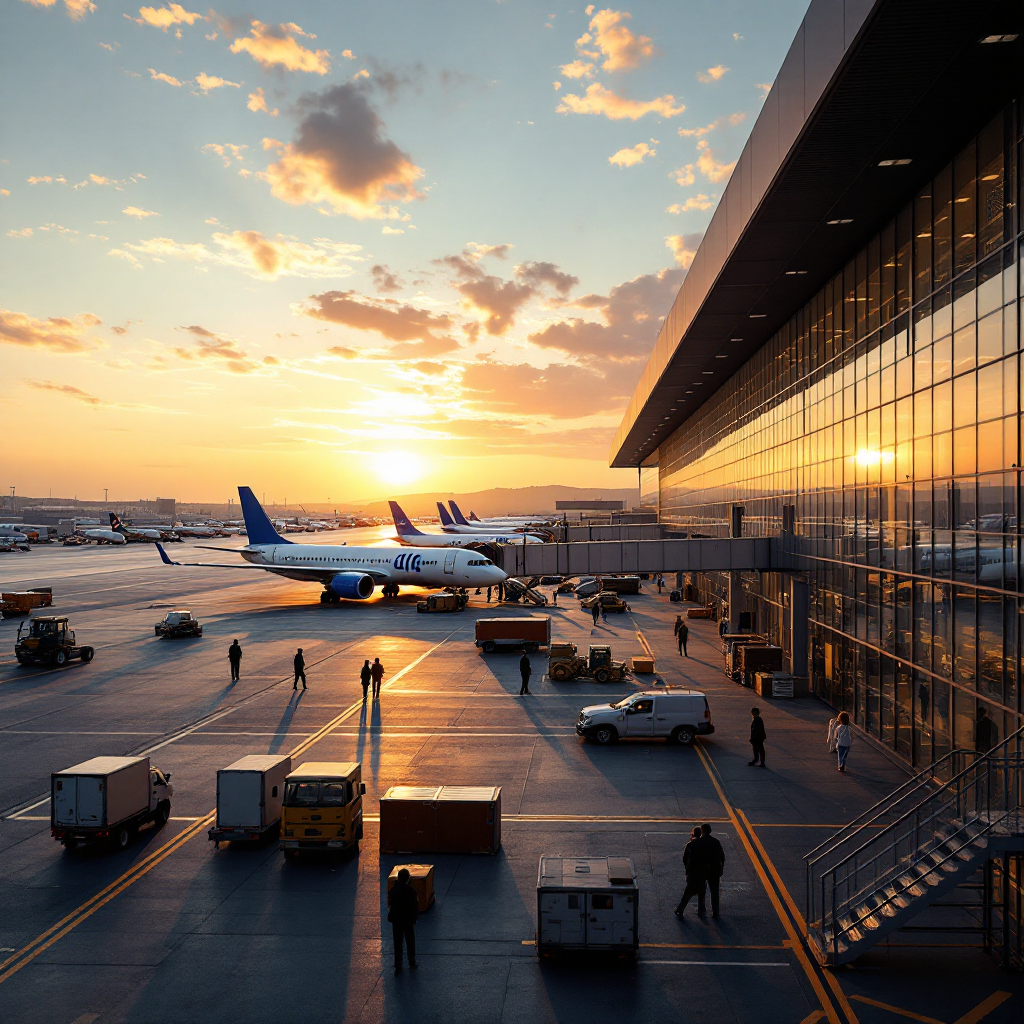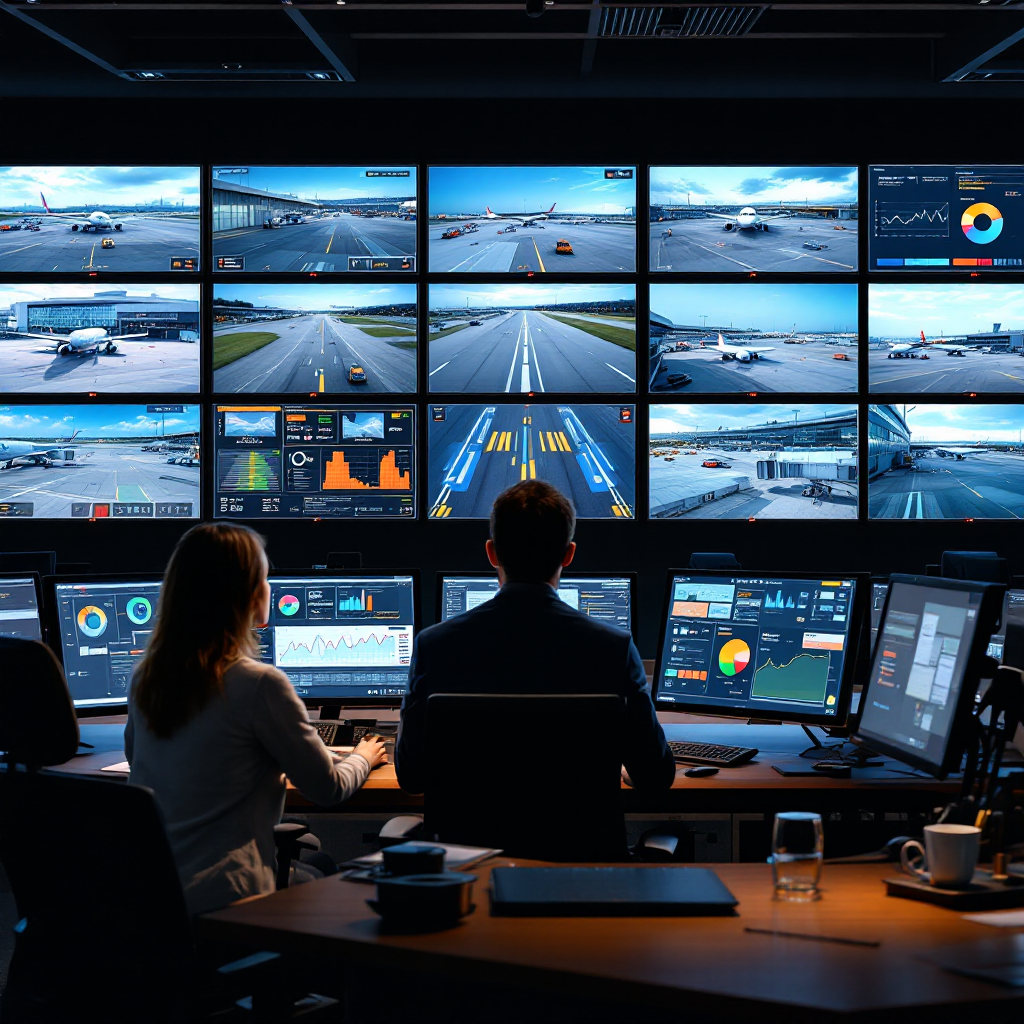Airport safety and security: video analytics and surveillance in the aviation industry
Video analytics and surveillance form the backbone of modern airport safety strategies. These systems turn camera feeds into structured alerts and events. They also allow teams to search hours of footage quickly and to operationalize what cameras see. For airports facing growing traffic, such capability improves airport safety and boosts situational awareness across ramps and gates. For example, runway incursions rose sharply over time, with detailed incident counts tracked by researchers; the trend highlights why better monitoring matters (source).
Systems now pair cameras with machine learning and neural network models to detect people, vehicles, and foreign object debris. They support safety management by adding a visual layer to traditional sensors. The FAA has urged new tools to mitigate surface risk, noting that automated vision and sensors increase awareness and can reduce incidents (FAA Safety Briefing). In fact, reports from the aviation safety record show how surface tools, training, and process updates work together to prevent accidents and to protect flight safety (ICAO data).
Airport teams use video surveillance and analytics to monitor apron movement, improve crew coordination, and enforce safety regulations. Visionplatform.ai helps by converting existing CCTV into an operational sensor network. Our platform lets airports own models and keep video data on-premise for GDPR and EU AI Act readiness. Additionally, readers can explore how video solutions apply to terminals and airside operations at our page about AI video analytics for airports (AI video analytics for airports).
Finally, continuous surveillance shortens detection times. It also reduces the chance that safety violations go unnoticed. For major airports, combining intelligent video with ATC procedures creates a stronger, layered defence against incursions and hazards.
Real-time visibility and alert: optimize turnaround and increase safety on the apron
Real-time visibility changes reaction time on the ramp. When cameras feed analytics, teams receive an immediate alert about unauthorized vehicles or stray equipment. This cuts response times and reduces the chance of damage to aircraft. For instance, live detections of foreign object debris let ground crews clear a path before a departure. This process contributes to increase safety on the apron and helps avoid costly delays.

Real-time data from cameras supports turnaround control and smooth aircraft turnaround. Ground handlers get precise location cues for baggage tugs, GPU, and fuel trucks. Thus, teams can optimize slot usage and cut time at gates. Shorter turnaround windows improve on-time performance and passenger experience. Also, when systems flag safety issues such as a breached perimeter or a vehicle on an active lane, ramp supervisors see live video and metadata together so they can act fast.
Technologies combine to form a resilient monitoring system. Cameras, edge processors, and user dashboards work together. The system sends structured events over MQTT so operations and security share the same situational picture. This model allows airports to unify control and to optimize resource assignment across apron areas. For further context on VMS integration and workflow, see our Milestone XProtect integration page (Milestone XProtect integration for airport CCTV).
AI vision within minutes?
With our no-code platform you can just focus on your data, we’ll do the rest
Apron video surveillance and component analysis for airport and airline operations
Hardware and software form a dependable stack for modern apron video surveillance. Cameras provide the live video and the video stream. Edge servers provide inference and storage. Analytics software processes video data and delivers events. Together, the stack creates a monitoring system that supports operations and security. Component analysis helps planners decide camera placement, resolution needs, and redundancy. For example, placing cameras to cover tow paths, jet bridges, and service roads reduces blind spots and helps detect hazards on the apron.
Camera selection matters. High dynamic range optics reduce glare. Wide-angle lenses cover more apron areas. In addition, infrared or low-light models help overnight ops. On the software side, a video analysis platform must support retraining on local footage and custom classes. That feature reduces false alarms and helps teams focus on real incidents. Our approach emphasises on-premise training so data generated by artificial intelligence remains inside an airport’s control. This setup meets EU AI Act guidance while letting airports tune models to site specifics.
Image processing relies on deep learning and neural network classifiers for object tracking and behaviour analysis. Systems must also integrate with airport management systems and with airline operations tools. This integration allows flight teams to link gate assignments with apron detections, and so improves aircraft turnaround. For guidance on how analytics support baggage and passenger flow, review our baggage hall analytics page (baggage hall occupancy and flow analytics).
Assaia for airports and assaia for airlines: analytics solutions for runway safety issues
Selected Assaia offerings focus on visual operations for both airports and airline teams. The platform demonstrates how data from cameras can improve the timing and sequencing of ground movements. In high-traffic environments, visual insights reduce runway departure delays and lower the risk of runway excursion. Industry groups have repeatedly warned about high-severity incursions; IATA noted that several events “could have resulted in the collision of two aircraft,” which underscores why automated observation matters (IATA).
Assaia for airports provides tools to monitor service vehicles, to verify gate readiness, and to improve ground resource allocation. Assaia for airlines helps crews measure door closure times and ramp performance. Both profiles reduce variability in turnaround control and support safety and operational goals. In practice, analytics enables better cross-team coordination, which keeps schedules stable and reduces risk during taxi and takeoff phases.
Analytics also tackles human-factor issues. By offering objective metrics, teams can review procedures and training. For example, visual logs simplify the analysis of near-miss events and safety violations. When combined with an analysis of reports, video makes trends easier to see. Airports can thus tailor interventions and improve compliance over time. Finally, airports integrating visual platforms see measurable reductions in surface occurrences and improved duty-of-care for passengers and crews.
AI vision within minutes?
With our no-code platform you can just focus on your data, we’ll do the rest
Real time passenger experience: enhancing aviation with video analytics
Real time passenger insights help gates and baggage handlers act faster. For example, visual occupancy feeds let staff reassign gates when a flight arrives early, and so reduce long walks for transfer passengers. These adjustments improve passenger experience and reduce the chance of missed connections. Also, faster baggage handling follows when systems flag slow loading or a stranded cart.
Airline operations benefit from clearer turnaround KPIs. Gate teams use live cues to time pushbacks and to coordinate boarding. This control shortens ground time and improves on-time performance. Airlines also use video data to review delays and to refine crew choreography for door operations and servicing. The net effect is smoother flows, fewer conflicts, and higher customer satisfaction.
Real-time video and multimedia video sources combine to build the visual picture. Airports and airlines then tie that picture into their control system and into safety management procedures. This linkage helps teams comply with safety regulations and to meet passenger expectations. For examples of how camera analytics support flow and queues, see our airport security queue analytics and related pages on airport operations (airport security queue analytics with cameras and airside perimeter intrusion detection AI).
Optimize airport operations: integrating real-time analytics and video surveillance to address safety issues
Unified platforms create end-to-end visibility across terminal and airside operations. They stream structured events, so operations teams and security teams work from the same facts. This integration reduces duplicate checks and speeds corrective action. In turn, airports improve throughput while ensuring safety and security at the same time.

Investments in analytics software pay back through fewer incidents and better resource use. Airlines and airports track KPIs such as gate occupancy, aircraft turnaround, and incident rates. When analytics identify recurring hazards on the apron, teams change processes and hardware. For example, linking camera events to an airfield navaid lighting monitoring system helps detect lighting outages and to support safe landings while prioritizing the safety of runways. As airports add Internet of Things sensors, video becomes part of a broader ecosystem that supports predictive maintenance and smarter scheduling.
Future trends include tighter application of ai and machine learning and more system based on data mining to forecast delays and to detect subtle safety violations. Also, control rooms will combine live video with analytics applications and with cognitive alerts to reduce operator load. Visionplatform.ai supports this shift by keeping models local, by enabling custom classes, and by streaming events to OT and BI systems. In short, analytics enables a more resilient airport of the future while preventing accidents and ensuring safety across apron and airside zones.
FAQ
How does video analytics reduce runway incursions?
Video analytics detects unauthorized movements and alerts teams before a conflict escalates. It provides timestamps and visual proof for investigations, which speeds corrective training and process fixes.
Can existing CCTV support advanced apron monitoring?
Yes. Systems like Visionplatform.ai turn existing cameras into sensors by adding on-premise models and edge processing. This approach avoids wholesale camera replacement and keeps data in the airport environment.
What is the role of machine learning in apron safety?
Machine learning classes identify vehicles, people, and debris automatically from video feeds. The application of machine learning helps reduce false positives and improves detection over time with local retraining.
Are these systems compliant with privacy rules?
When deployed on-premise, platforms can keep data local and auditable, which assists GDPR and EU AI Act readiness. Architects can also anonymize streams and restrict access as part of safety management.
How fast do alerts reach operators?
Real-time systems send alerts in seconds, both as visual highlights and as structured events via MQTT or webhooks. Rapid alerts let crews act quickly to clear hazards and to protect passengers.
Do analytics systems integrate with existing airport software?
Yes. Modern solutions connect to VMS, AODB, and baggage or resource-management systems. Integration reduces manual checks and lets operations optimize turnaround control.
Can analytics detect foreign object debris (FOD)?
Advanced models trained on local footage can detect FOD and flag it for removal. Frequent detections help teams spot recurring sources and to change procedures to prevent hazards on the apron.
What is the maintenance impact of adding video analytics?
Analytics can reduce maintenance by predicting failures via visual cues, such as damaged lighting or pavement issues. In addition, integrated monitoring assists navaid lighting diagnostics and scheduling for repairs.
How do analytics improve the passenger experience?
By speeding turnarounds and by enabling dynamic gate changes, analytics cut wait times and missed connections. Better baggage visibility also reduces mishandling and improves satisfaction.
Where can I learn more about integrating analytics with airport CCTV?
Explore case studies and integration guides on vendor pages and on Visionplatform.ai. For concrete steps, read our Milestone XProtect integration resource and our airport-focused analytics pages to see common deployment architectures.

